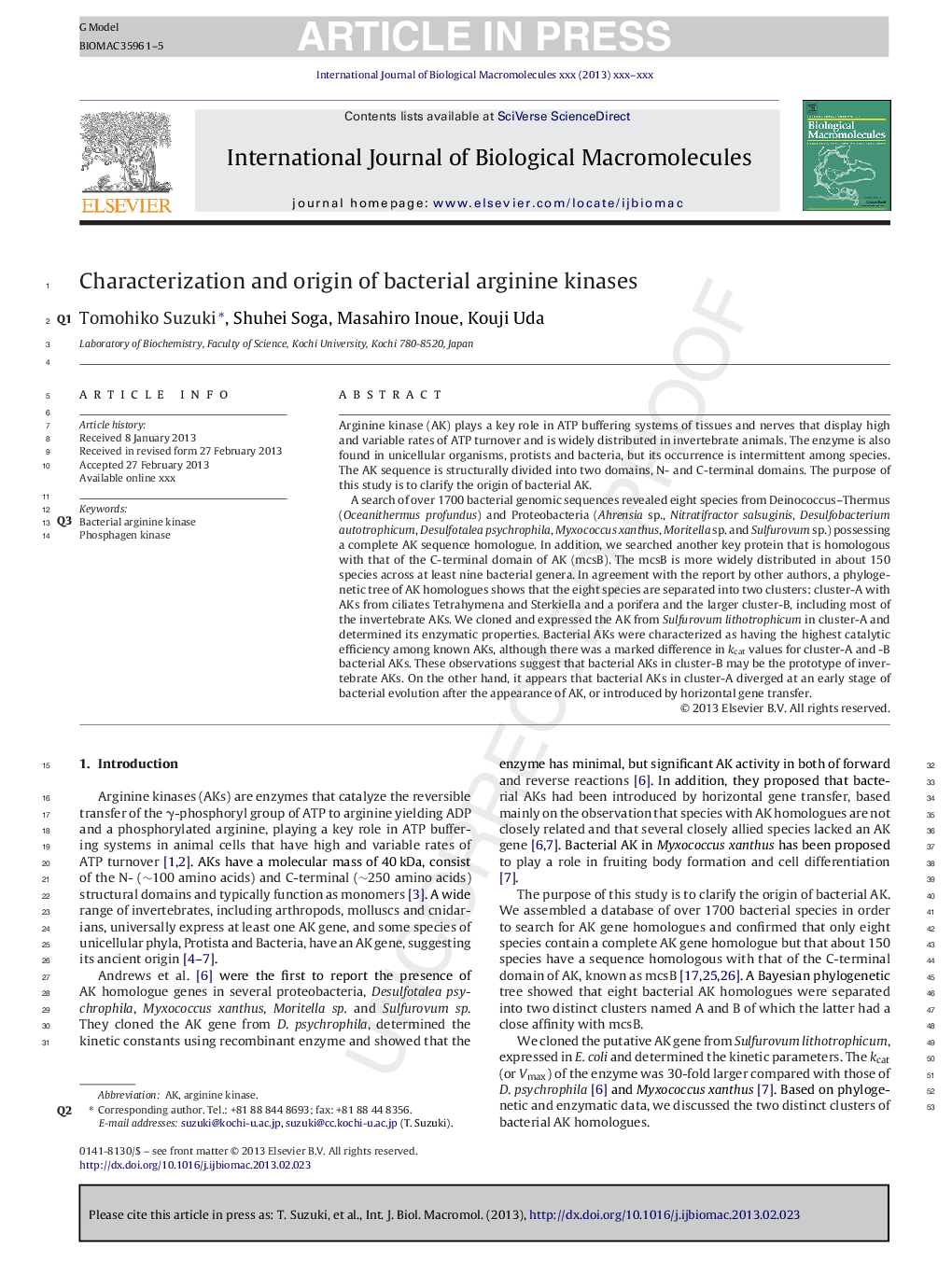| Article ID | Journal | Published Year | Pages | File Type |
|---|---|---|---|---|
| 8333884 | International Journal of Biological Macromolecules | 2013 | 5 Pages |
Abstract
A search of over 1700 bacterial genomic sequences revealed eight species from Deinococcus-Thermus (Oceanithermus profundus) and Proteobacteria (Ahrensia sp., Nitratifractor salsuginis, Desulfobacterium autotrophicum, Desulfotalea psychrophila, Myxococcus xanthus, Moritella sp. and Sulfurovum sp.) possessing a complete AK sequence homologue. In addition, we searched another key protein that is homologous with that of the C-terminal domain of AK (mcsB). The mcsB is more widely distributed in about 150 species across at least nine bacterial genera. In agreement with the report by other authors, a phylogenetic tree of AK homologues shows that the eight species are separated into two clusters: cluster-A with AKs from ciliates Tetrahymena and Sterkiella and a porifera and the larger cluster-B, including most of the invertebrate AKs. We cloned and expressed the AK from Sulfurovum lithotrophicum in cluster-A and determined its enzymatic properties. Bacterial AKs were characterized as having the highest catalytic efficiency among known AKs, although there was a marked difference in kcat values for cluster-A and -B bacterial AKs. These observations suggest that bacterial AKs in cluster-B may be the prototype of invertebrate AKs. On the other hand, it appears that bacterial AKs in cluster-A diverged at an early stage of bacterial evolution after the appearance of AK, or introduced by horizontal gene transfer.
Related Topics
Life Sciences
Biochemistry, Genetics and Molecular Biology
Biochemistry
Authors
Tomohiko Suzuki, Shuhei Soga, Masahiro Inoue, Kouji Uda,
